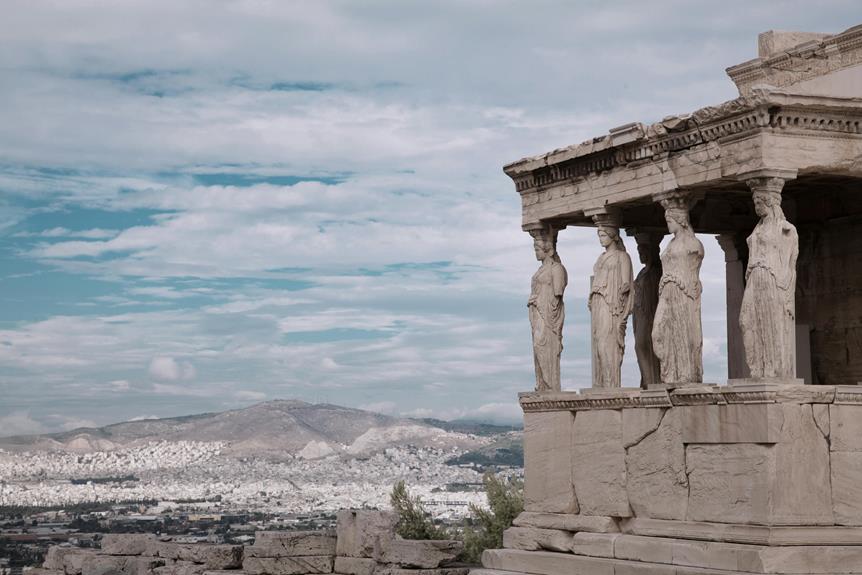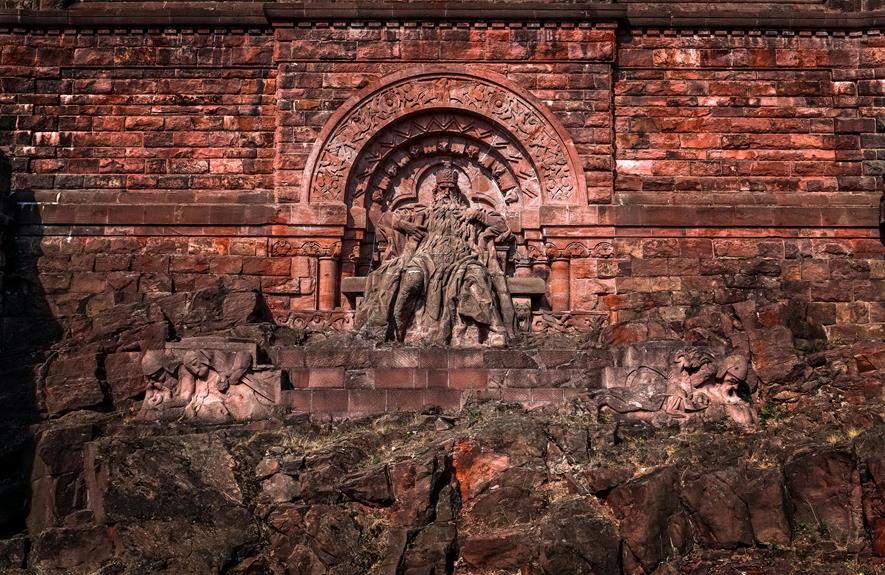Sites of political tragedy stand as silent witnesses to moments that have shaped nations and societies. These solemn grounds bear the weight of history, echoing with the voices of the past and demanding acknowledgment of the sacrifices made. As we walk through these hallowed grounds, we are confronted not only by the physical remnants of turmoil but also by the intangible legacy left behind. These sites compel us to confront uncomfortable truths and grapple with the complexities of human nature and power dynamics. The stories they hold are not merely tales of the past but cautionary whispers for the future, urging us to remember, reflect, and perhaps even, act.
Key Takeaways
- Serve as tangible reminders of pivotal political events in history.
- Evoke emotions of grief, anger, and reflection among visitors.
- Hold immense cultural significance as symbols of resilience and unity.
- Shape collective memory and foster shared narratives within communities.
- Create spaces for contemplation, commemoration, and storytelling.
Historical Significance of Political Tragedy Sites
The historical significance of political tragedy sites lies in their ability to serve as tangible reminders of pivotal events that have shaped the course of political history. These sites carry a profound emotional impact, stirring feelings of grief, anger, and reflection among visitors. They stand as evidence to the human cost of political turmoil and serve as cautionary tales against repeating past mistakes.
Beyond their emotional impact, political tragedy sites hold immense cultural significance. They become symbols of resilience, unity, and the enduring pursuit of freedom and justice. Visitors to these sites often experience a deep sense of connection to the shared history and values that bind a nation together.
Moreover, these sites provide a platform for education and remembrance, ensuring that future generations learn about the consequences of unchecked power, intolerance, and injustice. They offer a space for dialogue, contemplation, and the exchange of ideas, fostering a greater understanding of the complexities of governance and the importance of upholding democratic principles.
Impact on Collective Memory
Evidencing a profound influence on the societal consciousness, political tragedy sites intricately shape and mold collective memory. These sites serve as powerful reminders of significant historical events, anchoring collective remembrance in the minds of individuals and communities. The cultural significance of these sites lies in their ability to evoke emotions, prompt reflections on past injustices, and inspire a commitment to ensuring such tragedies are not repeated.
Collective memory, influenced by the presence of political tragedy sites, plays a vital role in shaping societies. These sites become focal points for shared narratives, fostering a sense of unity and solidarity among people who remember the events that occurred there. Through commemorations and rituals held at these sites, the memory of the tragedies is kept alive, ensuring that future generations learn from the mistakes of the past.
Moreover, the impact of political tragedy sites on collective memory extends beyond mere recollection of events. These sites often spark discussions about the values and principles that underpin a society, prompting individuals to contemplate the meaning of democracy, justice, and human rights. In this way, political tragedy sites become not just physical locations but also spaces for intellectual and moral reflection, contributing to the ongoing development of a nation's identity and ideals.
Architecture and Memorials
Architecture and memorials play a pivotal role in shaping the physical landscape of political tragedy sites, embodying the essence of historical events and serving as enduring symbols of remembrance and reflection. When considering the design and symbolism of memorials at these sites, several key factors come into play:
- Architectural Symbolism: The design of structures and monuments often incorporates symbolic elements that evoke emotions such as grief, resilience, and hope. For instance, the choice of materials, shapes, and colors can convey messages of strength or vulnerability.
- Memorial Design: The layout and arrangement of memorials are carefully planned to create spaces for contemplation and commemoration. From serene gardens to solemn halls, the design of these spaces influences the visitors' emotional experiences.
- Integration with Surroundings: Effective memorials seamlessly blend into the surrounding environment, harmonizing with the natural or urban landscape. This integration can enhance the memorial's impact by creating a sense of unity and continuity.
- Interactive Features: Modern memorials often incorporate interactive elements such as digital displays, audio recordings, or interactive exhibits. These features engage visitors on a deeper level, allowing for personalized experiences that foster empathy and understanding.
Commemoration Through Art and Literature
Exploring the profound ways in which art and literature serve as vehicles for commemoration at political tragedy sites reveals intricate layers of historical significance and emotional resonance. Through the creative expression of artists and writers, these sites become more than just physical locations; they transform into spaces for healing through creativity and remembrance through storytelling.
Artistic endeavors such as sculptures, paintings, and installations can capture the essence of a political tragedy, conveying the pain, resilience, and hope of those affected. These pieces not only pay tribute to the victims but also create a tangible connection between the past and the present, allowing visitors to engage with the history on a deeper level.
Moreover, literature plays a significant role in preserving the narratives of these tragedies, ensuring that future generations learn from the mistakes of the past.
Tourism and Dark Tourism
The intersection of historical remembrance and modern-day tourism often leads to the contemplation of dark tourism at political tragedy sites. Dark tourism involves visiting places associated with death, suffering, and atrocities. When it comes to political tragedy sites, the ethical implications of tourism become even more pronounced, raising questions about the appropriateness of commercializing such sensitive locations.
Here are four key points to bear in mind regarding ethics and tourism at these sites:
- Respect for the Victims: Tourists must show respect for the victims and their families by behaving in a solemn and reverent manner while visiting political tragedy sites.
- Educational Value: Dark tourism can serve an educational purpose by shedding light on past atrocities and fostering a deeper understanding of historical events and their impact on society.
- Preservation vs. Commercialization: Balancing the preservation of the site's integrity with the commercial interests of tourism operators is vital to maintaining the authenticity and solemnity of the place.
- Psychological Impact: Visitors may experience a range of emotions, including sadness, anger, and reflection, when confronted with the stark realities of political tragedies, highlighting the psychological impact of such visits.
Navigating the delicate balance between promoting historical awareness and respecting the dignity of the events that occurred at political tragedy sites remains a complex challenge in the domain of dark tourism.
Lessons for Future Generations
Extracting valuable lessons from the tragedies of the past at political tragedy sites is imperative for shaping the ethical consciousness and historical understanding of future generations. These sites serve as poignant reminders of the consequences of unchecked power, intolerance, and the erosion of civil liberties. By studying the events that transpired at these locations, individuals can glean important lessons learned about the fragility of democracy, the dangers of authoritarianism, and the importance of safeguarding human rights.
One of the key lessons learned from these sites is the need for constant vigilance in protecting democratic institutions and upholding the rule of law. History has shown that democracies can erode from within when democratic norms are disregarded and when leaders prioritize their own power over the well-being of the populace. Future generations must understand the future implications of apathy towards political processes, the dangers of misinformation, and the responsibility of citizens to hold their leaders accountable.
Moreover, visiting political tragedy sites can evoke empathy and a sense of shared humanity, fostering a commitment to ensuring that such atrocities are never repeated. These sites provide a tangible connection to the past, reminding visitors of the human cost of political violence and the importance of actively engaging in the preservation of democracy. By internalizing the lessons learned from these sites, future generations can work towards building a more just and equitable society.
Challenges of Preserving Tragic Sites
Preservation of tragic sites presents a myriad of complex challenges that demand thoughtful consideration and strategic planning to guarantee their historical significance is preserved for future generations. The struggles encountered in preserving these sites often involve ethical dilemmas that require delicate navigation.
Some of the key challenges include:
- Balancing Preservation with Development: Finding the equilibrium between maintaining the authenticity and solemnity of a tragic site while allowing for necessary development to support the surrounding community can be a contentious issue.
- Ensuring Respectful Tourism: Managing the influx of visitors to tragic sites in a way that honors the memory of the events that occurred there without turning the location into a spectacle can be an important preservation struggle.
- Addressing Controversial Histories: Confronting the uncomfortable truths and controversial aspects of the history associated with tragic sites poses a challenge in deciding how much detail should be presented to the public to maintain historical accuracy while being sensitive to the feelings of those affected.
- Securing Adequate Funding: Financial resources are vital for the maintenance and preservation of tragic sites, and ensuring a sustainable funding source is essential to overcome preservation struggles and uphold the integrity of these historical landmarks.
Frequently Asked Questions
How Do Political Tragedy Sites Impact Local Economies?
Political tragedy sites can have a significant economic impact on local economies. These sites often attract tourists, leading to increased tourism revenue for the local area. The influx of visitors can boost businesses such as hotels, restaurants, and souvenir shops.
Additionally, the preservation and maintenance of these sites can create jobs and stimulate the economy through cultural heritage tourism. Overall, political tragedy sites play a role in shaping the economic landscape of their surrounding communities.
Are There Any Paranormal Activities Reported at These Sites?
Paranormal sightings and reports of supernatural phenomena at historical sites have long captured the public's imagination. These alleged occurrences often spark curiosity and debate among believers and skeptics alike.
While some attribute such phenomena to the power of suggestion or environmental factors, others suggest a more otherworldly explanation. Investigating and documenting these reports can provide a fascinating glimpse into the intersection of history, tragedy, and the unknown.
What Rituals or Ceremonies Are Held at These Locations?
Memorial services and commemorative plaques are often held at locations of historical significance to honor the memory of those affected by political tragedies. These rituals and ceremonies serve as a way for communities to come together in remembrance and reflection.
They provide a space for individuals to pay their respects, share stories, and express solidarity. The ceremonies typically involve speeches, moments of silence, laying of wreaths, and other symbolic gestures to commemorate the lives lost and the events that occurred.
Do Political Tragedy Sites Attract Any Controversial Groups or Individuals?
Controversial groups and individuals often gravitate towards sites of political tragedy, drawn by the opportunity to amplify their message or provoke reactions. This phenomenon has been observed at various historical landmarks worldwide.
Despite potential negative impacts on tourism due to associated controversies, these groups and individuals continue to converge on such locations, sparking debates on the balance between freedom of expression and respect for the solemnity of these sites.
Are There Any Conspiracy Theories Surrounding These Tragic Events?
Conspiracy theories often arise in the aftermath of tragic events, fueled by media coverage and public perception. The involvement of government agencies can also contribute to the proliferation of such theories.
Historical context plays a significant role in shaping how these events are interpreted, with some theories gaining traction due to past instances of government misconduct.
Conclusion
To sum up, sites of political tragedy serve as poignant reminders of the past, shaping collective memory and prompting intellectual reflection. Through their architecture, memorials, and art, these sites create spaces for contemplation and commemoration, fostering unity and preserving a nation's identity.
However, challenges in preserving these tragic sites remain, underscoring the importance of ongoing efforts to guarantee that the lessons of history are not forgotten.


